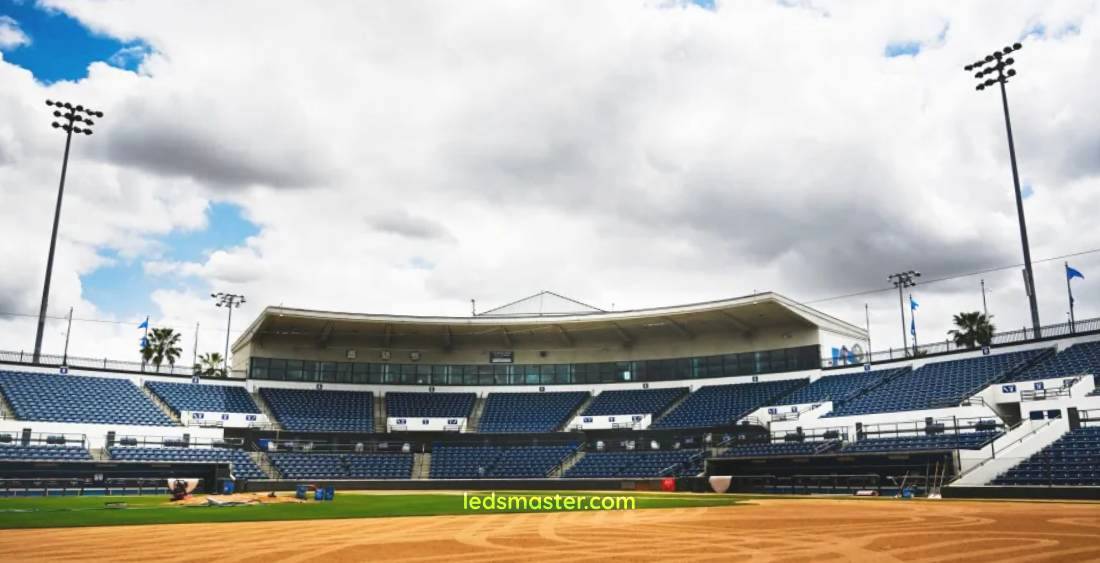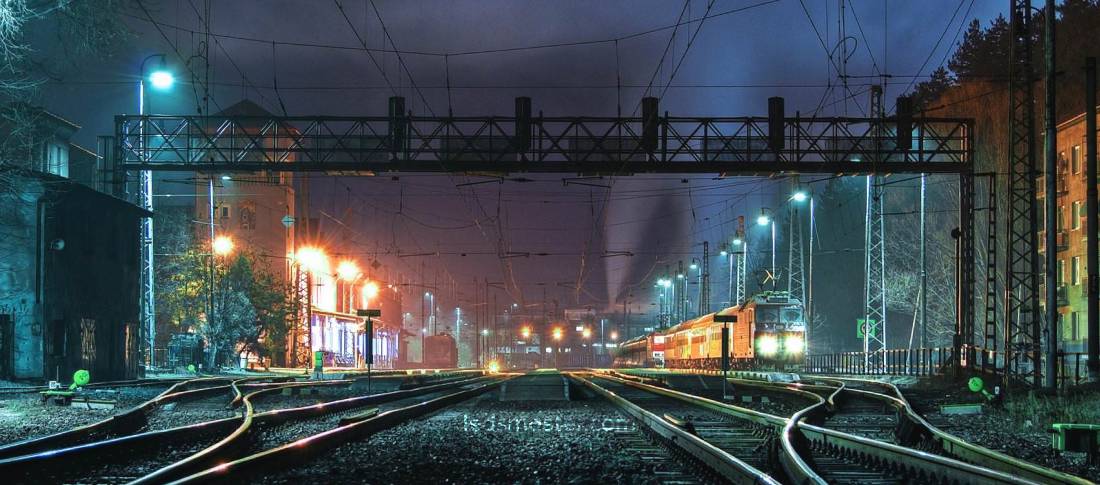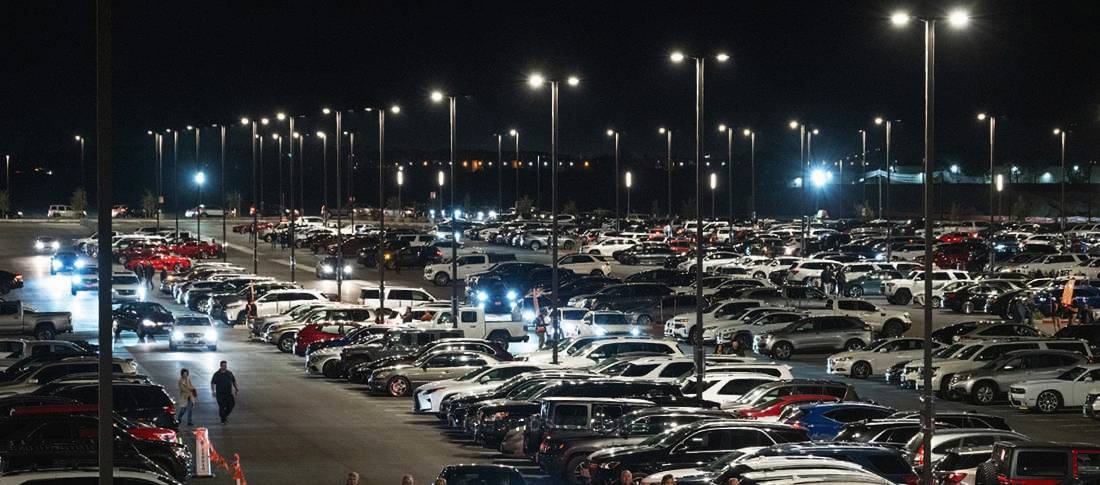High mast systems provide a practical solution for lighting large areas like highways, industrial complexes, and public spaces with minimal obstructions. With advancements in LED technology and smart controls, they are becoming more energy-efficient and environmentally friendly.
Get your complimentary lighting design today
High mast light poles serve a unique role in illuminating vast areas effectively by positioning lights at a high altitude, offering broader coverage compared to traditional lighting systems. The design and construction of these poles, combined with modern lighting technologies, allow for enhanced visibility, safety, and overall efficiency in various large-scale applications.
Table of Contents
Toggle
High mast light poles are engineered to reach heights typically ranging from 20 to 40 meters or more. The material of the pole is often high-quality steel or aluminum, chosen for its durability and ability to withstand external forces such as wind and environmental conditions. The height and structure of the pole are determined based on the lighting requirements of the area being illuminated, with taller poles allowing for greater coverage and better light distribution. Each pole is carefully designed to balance height and structural integrity, ensuring that it remains sturdy under various environmental conditions.
The fixtures attached to the top of high mast poles come in several forms, with the most common being LED, high-pressure sodium (HPS), and metal halide lights. LED lighting has become the preferred choice due to its energy efficiency, longevity, and high lumen output. The wattage of the fixtures and the lumens produced are chosen according to the lighting needs of the space, with some high mast systems requiring multiple fixtures to achieve the desired level of brightness. These lights are designed to provide maximum coverage with minimal energy consumption, helping to improve both the quality and efficiency of the lighting system.
One of the unique features of high mast lighting is the raising and lowering mechanism, which allows for easy maintenance of the light fixtures. This system typically consists of a motorized winch or pulley system that lowers the lighting fixtures to ground level for maintenance or replacement. By incorporating this system, there is no need for cranes or special equipment to reach the lights at the top of the pole, making maintenance both faster and safer.
Mounting and brackets used in high mast lighting systems are designed to hold multiple fixtures in place. The configuration of the mounting varies depending on the lighting needs. Some poles may hold up to six or more fixtures, arranged in a circular or semi-circular pattern to ensure even light distribution. The brackets themselves are engineered to withstand the weight of the fixtures and the forces they may encounter, such as wind and weather conditions. Proper mounting is vital for ensuring the stability and performance of the lights.

The height of the high mast pole is determined by the area that needs to be illuminated. Taller poles are used for larger spaces, as they allow for broader light coverage. The height must be carefully selected based on the dimensions of the area, as well as any obstructions that may interfere with the light distribution. In most cases, poles range from 20 to 40 meters, though taller poles may be required for specific applications such as ports or airports.
The number of lighting fixtures mounted on a single pole is a critical factor in determining the overall light output. More fixtures allow for greater illumination, but the number must be balanced to avoid excessive energy consumption. The number of fixtures is calculated based on the size of the area, the height of the pole, and the brightness required. For large areas like parking lots or highway interchanges, multiple fixtures may be necessary to achieve the appropriate lighting levels.
Light distribution is a key consideration in high mast lighting systems. The goal is to provide uniform lighting across the entire area, without dark spots or overly bright areas. Uniform light distribution ensures that visibility is consistent throughout the space, which is particularly relevant in areas such as airports and industrial yards where safety and visibility are paramount. The arrangement and angle of the fixtures play a significant role in achieving the desired uniformity. Engineers use photometric analysis to determine the optimal configuration for the lighting fixtures.
Due to their height, high mast poles must be designed to withstand high wind speeds. Wind load is a major factor in the structural engineering of these poles. The poles are constructed to be sturdy and resilient, using materials and designs that can endure strong winds without bending or collapsing. In areas prone to high winds, the foundation and anchoring of the poles are strengthened to enhance stability. Engineers calculate the wind load for each specific location and design the pole accordingly, ensuring that it remains stable under extreme weather conditions.
High mast light poles are often installed in outdoor environments, where they are exposed to various elements that can cause corrosion over time. To prevent deterioration, the poles are coated with materials that offer protection against rust and corrosion. Galvanization is a common method used to protect steel poles, while aluminum poles naturally resist corrosion. In coastal or industrial areas where the environment is more corrosive, additional protective coatings may be applied to prolong the life of the pole.
Fixed head systems feature lighting fixtures that are permanently mounted at the top of the pole. These systems are stable and require minimal maintenance. However, when maintenance is required, it typically involves the use of cranes or specialized equipment to reach the fixtures. Fixed head systems are often used in areas where frequent maintenance is not required, and the lights can operate for long periods without needing adjustments or replacements.
Lowering head systems are designed for easier maintenance by allowing the lighting fixtures to be lowered to the ground. This system uses a motorized or manual mechanism to lower the entire fixture assembly, making it more convenient for maintenance personnel to access the lights. The lowering mechanism is often motorized and can be operated from the ground, eliminating the need for lifts or cranes. This type of system is often chosen for applications where maintenance is more frequent or where access to the lighting fixtures is otherwise difficult.
Some high mast lighting systems feature a rotating mast, allowing the lighting fixtures to be rotated horizontally. This can be useful for adjusting the direction of the light to better cover different areas or for temporary adjustments during events or construction. Rotating masts are commonly used in stadiums or large public spaces where lighting needs may change depending on the activity in the area. The ability to rotate the lights provides greater flexibility and control over the illumination.

The foundation of a high mast light pole is a critical aspect of its installation. The poles are installed with deep concrete foundations designed to support the weight of the pole, the lighting fixtures, and the forces exerted by wind. Proper engineering of the foundation is vital to ensuring the stability and safety of the pole, particularly in areas where the ground may shift or where the poles are subjected to high winds. The size and depth of the foundation are determined by the height of the pole and the environmental conditions of the installation site.
The installation of high mast lighting requires careful planning and the use of specialized equipment, including cranes to lift the poles into place. The poles are typically assembled on-site, with the lighting fixtures mounted and secured before the entire assembly is raised. Once in position, the pole is anchored to its foundation, and the lighting fixtures are tested to ensure proper operation. Installation teams must follow safety protocols to prevent accidents during the installation process, especially when dealing with tall structures and heavy equipment.
Routine maintenance is required to keep high mast lighting systems functioning optimally. This includes checking the lighting fixtures, cleaning lenses, and replacing bulbs when necessary. The raising and lowering mechanism simplifies this process, allowing maintenance teams to access the fixtures without the need for large cranes or specialized equipment. Regular inspections of the pole, foundation, and electrical systems are also recommended to ensure that the system remains in good condition. Maintenance schedules vary depending on the environment and the type of lighting system used, but LED fixtures generally require less frequent maintenance due to their longevity.
Safety is a top priority during the installation and maintenance of high mast lighting systems. Proper procedures must be followed when lowering and raising the light fixtures, and all equipment must be inspected to ensure it is functioning correctly. The use of motorized winches and secure anchoring systems helps to prevent accidents during maintenance. Additionally, workers should be trained in the operation of the raising and lowering mechanisms to ensure that maintenance is performed safely and efficiently. Regular safety checks of the electrical system, wiring, and lighting fixtures are also necessary to prevent any potential hazards.
High mast lighting systems are subject to various international standards, including ISO and EN regulations, which ensure that the design, materials, and installation of these systems meet safety and performance requirements. These standards outline the specifications for pole construction, wind load resistance, electrical safety, and light output, ensuring that the systems operate efficiently and safely. Compliance with these standards is mandatory for many installations, particularly in public spaces and transportation hubs.
In addition to international standards, high mast lighting systems must adhere to local regulations and building codes. These regulations vary by region and may include specific requirements for pole height, lighting intensity, and environmental impact. Local authorities may also require permits and inspections before installation can proceed. Ensuring compliance with local regulations is an essential step in the planning and installation of high mast lighting systems.
While high mast lighting systems offer many benefits, they also present certain challenges that need to be addressed during design, installation, and maintenance.
One of the primary challenges with high mast light poles is their susceptibility to sway due to high winds. The tall structure of these poles makes them more vulnerable to wind loads, particularly in open areas like highways or ports. To mitigate this issue, engineers must carefully calculate the wind resistance based on the height of the pole, the weight of the fixtures, and the specific wind conditions of the installation site. In areas prone to hurricanes or strong winds, poles may be reinforced with additional structural supports or designed with breakaway features to prevent catastrophic failure.
In some public spaces, high mast lighting systems may be targeted by vandals or thieves, particularly for the valuable materials used in the poles and fixtures. To prevent vandalism, poles are often designed with tamper-resistant features, such as secure access points for the raising and lowering mechanisms. Additionally, the materials used in the construction of the poles, such as galvanized steel, are chosen for their durability and resistance to tampering.
Although high mast lighting provides broad coverage, it can sometimes create glare, which can be uncomfortable or dangerous for drivers and pedestrians. Glare occurs when the brightness of the lights exceeds the level that the human eye can comfortably process, causing discomfort or reduced visibility. To minimize glare, lighting designers use diffusers or shielding to direct the light downward and reduce the intensity of the light in areas where it might cause visual discomfort. Additionally, the arrangement of the lighting fixtures can be adjusted to ensure that the light is distributed evenly across the area without creating overly bright spots.
The initial cost of high mast lighting systems can be high, particularly when accounting for the materials, installation, and ongoing maintenance. While the energy efficiency and longevity of LED fixtures can reduce operating costs over time, the upfront investment may be a barrier for some projects. To address cost concerns, project planners must carefully balance the need for high-quality lighting with budget constraints, considering factors such as long-term energy savings and reduced maintenance costs when making decisions about materials and technology.
High mast light poles are an effective solution for illuminating large areas, offering broad, uniform light coverage from elevated heights. Their durable design, energy-efficient LED fixtures, and integration with modern lighting technologies like smart controls and solar power make them versatile and sustainable for various applications. Despite challenges such as wind resistance and installation costs, high mast light poles provide reliable, long-term performance with minimal maintenance, making them ideal for highways, industrial sites, and public spaces.